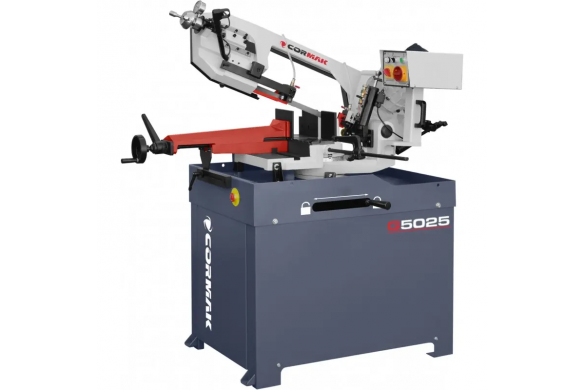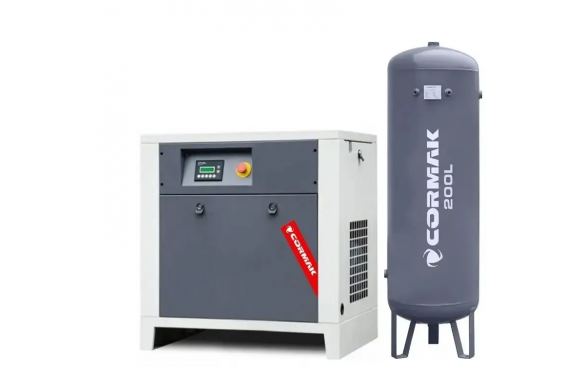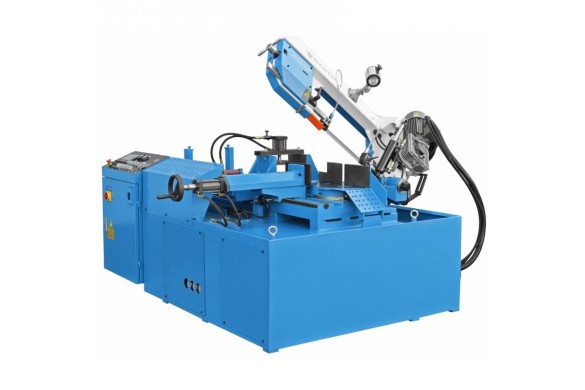What oil for a hydraulic splitter? How do I change it?

Are you wondering which oil is best for a hydraulic log splitter? A hydraulic log splitter is an indispensable tool in any workshop that processes wood. The performance and longevity of the machine depend on many factors, and one of the most important is the hydraulic oil, which requires regular maintenance. In this article, you will learn which oil to choose for your log splitter and how to replace it to ensure smooth operation of your machine for many years.
In this article:
- Which oil for a hydraulic log splitter?
- How to change oil in a log splitter?
- How does a log splitter work?
- Woodworking machines
Which oil for a hydraulic log splitter?
Choosing the right oil for a hydraulic log splitter is crucial for proper machine operation. Typically, manufacturers of hydraulic machines such as hydraulic log splitters offered by Cormak recommend using hydraulic oils with specific properties. Mineral oils, which offer high oxidation resistance and thermal stability, are usually the best choice. The most commonly used hydraulic oils are ISO VG 46 or 68, depending on the operating conditions of the machine.
Always consult the user manual of your specific model to ensure you select the correct oil. The right viscosity and stability will prevent damage to the hydraulic system and ensure proper operation of cylinders and other components.
Which oil for a log splitter?
For log splitters, it’s best to use high-quality hydraulic oils that maintain proper viscosity over a wide temperature range.
The most recommended oils are:
- Mineral oil – suitable for most splitters, providing good performance and protecting the hydraulic system.
- Synthetic oil – ideal for more demanding conditions, offering better wear protection and greater resistance to extreme temperatures.
Always select oil according to the manufacturer’s recommendations.
How to change oil in a log splitter?
Changing oil in a log splitter is an important maintenance step that affects its performance and lifespan. How to change oil? Here are the basic steps:
- Preparation – Gather all necessary items: new oil, container for old oil, funnel, and tools.
- Draining the old oil – Locate the oil fill and drain ports. Open the drain valve and allow the oil to drain completely. Collect the oil in a suitable container.
- Filling new oil – Before adding new oil, check all seals and hydraulic components for proper condition. Pour the correct amount of fresh oil into the reservoir.
- Level check – Start the splitter for a few minutes and check the oil level. Top up if necessary.
How does a log splitter work?
Wondering how a log splitter works? Hydraulic log splitters operate by using hydraulic pressure to split logs. Fluid (water or oil) is pumped into cylinders that build pressure and generate the force needed to split the wood. This is an efficient and effective way to quickly and precisely divide wood into smaller pieces. Woodworking machines of this type are essential in workshops producing firewood, furniture, or other wooden products.
Why is hydraulic oil so important in a log splitter?
Hydraulic oil plays a crucial role in hydraulic log splitters. It lubricates mechanical parts, protects the system from overheating, and prevents corrosion. Moreover, it transfers the force required to operate the cylinders, ensuring effective wood splitting. Regular oil changes are essential for trouble-free operation and long service life.
Industrial machine manufacturer – Cormak
If you are looking for high-quality woodworking machines, check out the offer of industrial machine manufacturer Cormak. They offer a wide range of woodworking machines, including hydraulic log splitters ideal for any workshop. Cormak has been providing innovative and high-quality solutions for professionals for years.
Woodworking machines
If you are interested in woodworking machines, Cormak offers a wide range of products for both small workshops and large production facilities. Their industrial machines include saws, milling machines, and log splitters. Thanks to high-quality materials and modern technology, Cormak products guarantee reliability and durability.





